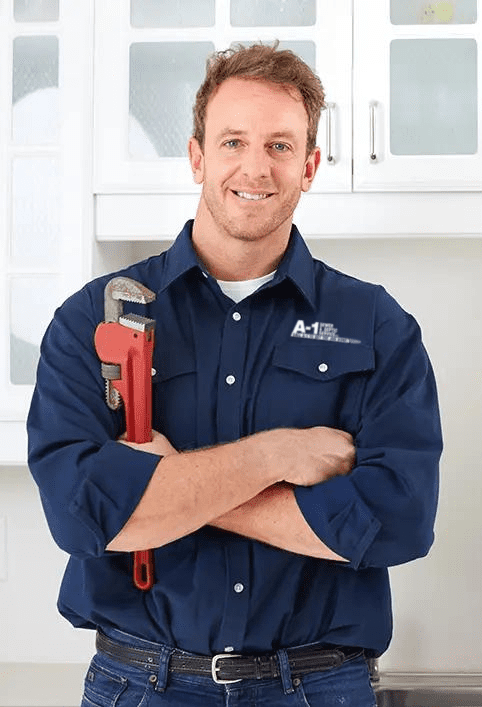Homeowners can agree that indoor plumbing is one of the best modern inventions of all time. Having water, let alone hot water, on demand is something we’ve all come to expect in our daily lives. However, all plumbing systems may eventually develop clogs and plumbing problems, and there’s no sugar-coating that. We’ll give you tips on clearing stubborn clogs in kitchen sinks, toilets, bathtubs, and floor drains. Whether you’re battling a backup with baking soda and boiling water, using drain cleaners to stop the clogging, or grabbing a plunger to try and clear the blockage, a clogged drain is never fun.
These time-tested techniques can dislodge almost any clog and buildup. If the clog doesn’t clear after you’ve made a few attempts, you’ll have to admit unclogging defeat and turn the job over to a licensed professional plumber and drain cleaning specialist. Beware that if you exert too much force, it can cause permanent damage to the pipe or plumbing fixture, especially if you have deteriorated PVC piping or worn-out plastic drains. Using a drain snake or auger is one of the best ways to clear a clog, whether in a kitchen sink, bathroom sink, shower drain, or tub drain.
Using Mechanical Drain Cleaners to Clear a Clog
Mechanical drain cleaners are considered your plungers, drain snakes, augers, or other hand-powered tools that can be used to clean out a drain. These plumbing instruments are considered some of the best drain cleaning methods, especially if used by an experienced plumber.
If you are a homeowner with home improvement experience or have an understanding of your plumbing system, then you can try your hand at a DIY drain cleanout. Here are some specialized plumbing tools that should be in every DIY household. They’re available at your local hardware store or home center, and they’re relatively affordable.
- When trouble arises, the first tool you should reach for is your plunger. They aren’t just for the toilet; they work with most fixtures, including bathroom sink drains, kitchen drains, clogged sinks, and of course, toilets.
- Turn to a cable auger or a plumber’s snake for clogs located further down the drain pipe. This long, flexible steel cable is wound around a spool with a hand crank. They can be as long as 100 feet, but the 25-foot model is enough for most household drain clogs and sink clogs. Be careful when running this through the p-trap, not wanting to bust through the pipe or pull it apart at the slip nuts. Be sure to remove the kitchen sink or bathroom sink stopper, strainer, or drain cover to have a clear path to the drain clog.
- You can rent an electric power auger for the worst clogs far away from the fixture. The machine is a large cable auger that is powered by an electric motor. It’s very efficient at cutting through clogs, including tangled tree roots.
If you decide to rent an electric power auger, ensure the agent instructs you on safely dispensing and retrieving the cable. If you have ANY doubt about your ability, hiring a professional plumber to run an electric auger and perform the line snaking is always safer.
Cleaning your garbage disposal will have its own set of unique challenges for the DIY homeowner.
Using Natural Drain Cleaners to Clean Out your Drain
Natural Drain Cleaners are favored cleaning solutions amongst plumbers and plumbing companies. Using natural ingredients helps ensure the safety of not only yourself but also your plumbing system. A natural drain cleaner is safe to use for bathroom drains, kitchen double sinks, shower drains, or anywhere water drains.
The most common and well-known natural drain cleaner is the vinegar and baking soda solution. When combining vinegar and baking soda, a fizzy solution is created that helps to break down clogs and gunk while also eliminating odors. When this solution is used in a drain, and you run water down that drain, it activates the compound further in clearing the clog.
Natural drain cleaners may not completely eliminate the clog, but they will assist in the process. A common combination for homeowners is to use the natural/mechanical technique. Utilizing the initial hit of a natural drain cleaner to break down the clog as best it can and then diving in with a mechanical drain cleaner will finish the job and get the drain flowing again.
Using Chemical Drain Cleaners on your Drain Opening
Homeowners have also used chemical drain cleaners to clear the buildup and blockages of their clogged drains. Relying on chemical reactions, products like Drano or using baking soda and a cup of white vinegar can help clear the gunk, grime, toothpaste, soap scum, and other build-ups that cause the sink to slowly drain or have standing water.
Plumbers do not always recommend chemical drain cleaners due to their harmful effects on a plumbing system. There are other natural and mechanical ways to clear a clog without the use of chemical drain cleaners. But if you have to, when using chemical drain cleaners, it’s important to use rubber gloves and have pliers or a wire coat hanger handy to remove any gunk and buildup you can pull out of the drain.
Using Chemical Drain Cleaners on your Drain Opening
For homeowners, there are actions that can be taken to help prevent clogged drains from frequently occurring. But If all attempts to clear the clogged drain fail, or if you aren’t comfortable using a cable auger or an electric power auger, contact a Kansas City plumber from A-1 Sewer & Septic Services Inc. to get the job done.
We have been cleaning and unclogging drains since 1968, and we’re confident that we can get down to the cause of the problem so your drains can get up and running as fast as possible. A-1 Sewer & Septic Services specializes in drain cleaning, septic tank cleanouts, water heater repair/installation, and other common plumbing issues.
Call today to schedule a service appointment!



